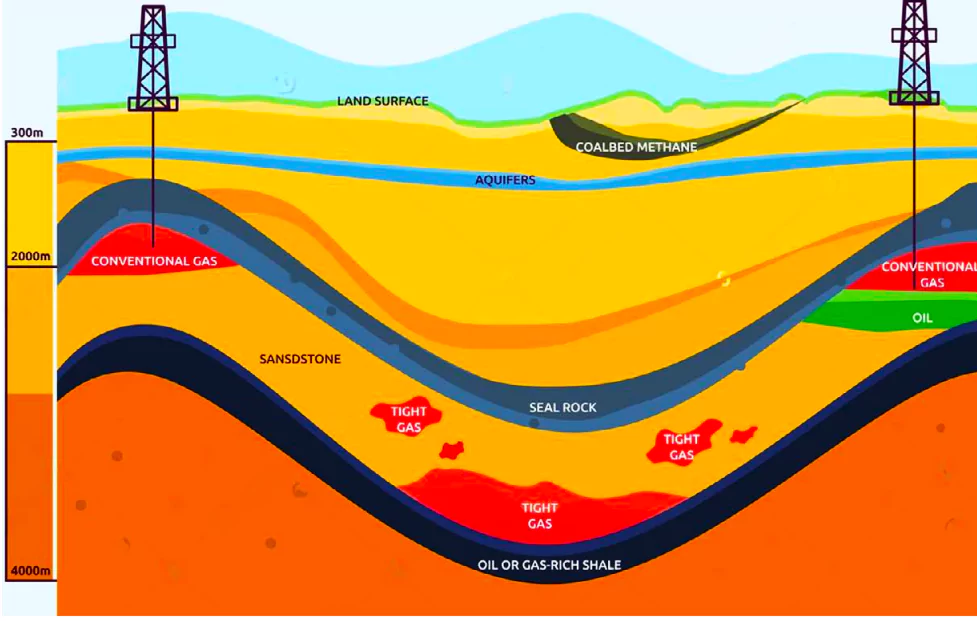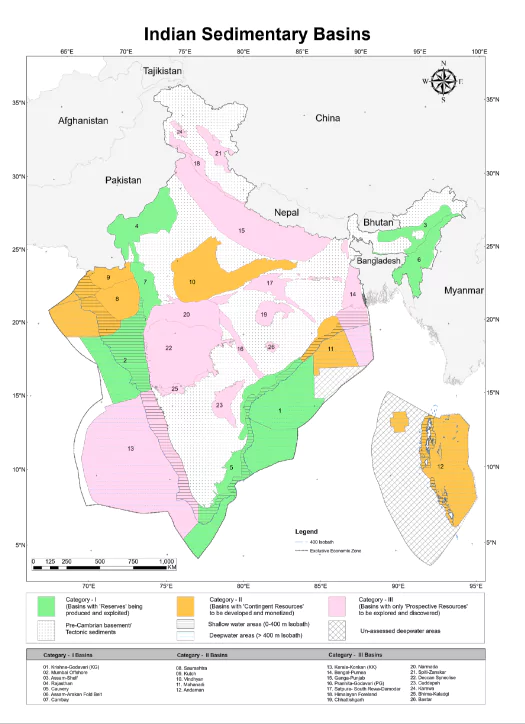Context
The utilization of hydrocarbons for powering large engines polluting the air and water contributed to the phenomenon of global warming.
About Hydrocarbons

The term ‘hydrocarbon’ means compounds of carbon and hydrogen only. Hydrocarbons are the critical energy storage molecules within all major types of fossil fuels (including coal, oil, and natural gas) and biofuels.
- Burning hydrocarbons in the presence of oxygen (O2) produces carbon dioxide (CO2) and water (H2O).
-
Formation:
- The geological forces within the Earth’s crust subjected dead organisms to heat and pressure, resulting in the accumulation of hydrocarbons within rock formations.
Enroll now for UPSC Online Course
-
Forms of Hydrocarbons:
- The most common forms in which these hydrocarbons exist in subterranean rock formations are natural gas, coal, crude oil, and petroleum.
- They are usually situated in subterranean reservoirs formed when a denser, more durable rock layer rests atop a less resistant one. This creates a lid that causes hydrocarbons to accumulate below it.
- These formations play a crucial role because without them, the hydrocarbons would rise to the surface and disperse.
-
Uses of Hydrocarbons:
- Feedstock in petrochemical plants to make chemicals, plastics, and synthetic rubber
- Fuels for heating, cooking, and drying
- Fuels for transportation
- Additives for motor gasoline production
- Diluent (a diluting or thinning agent) for transporting heavy crude oil
-
Assessment of Porosity and Permeability:
- Experts use the tools, methods, and techniques of the field of petroleum geology to assess these rocks, including to check for their porosity and permeability.
- If a rock formation is highly porous, it could hold a larger quantity of hydrocarbons. Similarly, the more permeable a rock is, more easily the hydrocarbons will flow through it.
-
Source of Hydrocarbon:
- The primary source of hydrocarbons in this rocky underground is called kerogen: lumps of organic matter.
- Kerogen can be deposited from three possible sources: as the remains of a lake (lacustrine), of a larger marine ecosystem, or of a terrestrial ecosystem.
-
Kerogen Degradation and Hydrocarbon Yield:
- Over time, the rocks enclosing the kerogen can undergo heating and compression, exerting pressure on the kerogen, leading to its degradation.
- Depending on its origin, lacustrine kerogen produces waxy oils, marine kerogen yields oil and gas, while terrestrial kerogen results in light oils, gas, and coal.
-
Source Rock Assessment:
- The rock containing the kerogen is called the source rock, and petroleum geologists are tasked with locating it, understanding its geophysical and thermal characteristics, and characterising its ability to yield hydrocarbons.
- They also undertake modelling activities informed by observational data and dig smaller exploration wells to estimate the amount of hydrocarbons there, and report it to the relevant regulatory body.
Hydrocarbon Potential Of Sedimentary Basins of India

- Category-I: These are commercially produced covering 30% of total basinal area (1.0 million sq km) and a total hydrocarbon of 21,487 MMTOE, which is 86% of the country’s total that includes discovered as well as risked undiscovered potential. These 7 basins are namely:
- Category-II basins: These which are discovered but awaiting development, cover 0.78 million sq km (23% of total basinal area), holding 8% (1,951 MMTOE) of the total hydrocarbon in place. These include:
- Saurashtra
- Kutch
- Vindhyan
- Mahanadi
- Andaman
Hydrocarbon Exploration and Licensing Policy (HELP)
HELP is an exploration and production policy of the Government of India that replaced the New Exploration Licensing Policy (NELP).
Enroll now for UPSC Online Classes
- Objective: To enhance domestic oil and gas production by intensifying exploration activity and investment.
- Open acreage licensing policy: Through this, an explorer can study and bid for any block in accordance with its competitive advantage.
- Revenue sharing model: This encourages cost efficiency in mining operations by replacing the profit-sharing contract established by NELP.
- The contractor pays the government a share of its revenue (net of royalty) as per the contract.
- Marketing and pricing freedom: The contractor can sell crude oil in the domestic market through a transparent bidding process.
Also Read: Equity Concerns In Banning Fossil Fuel Extraction
![]() 16 Apr 2024
16 Apr 2024

